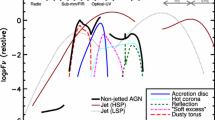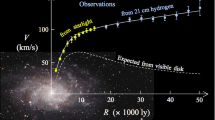Abstract
This paper revisits fundamental properties of the old open cluster NGC 188 based on more reliable cluster members in \(Gaia\)-EDR3. The DBSCAN clustering algorithm is used to identify cluster members in a normalized 5D parametric space. We obtain 1212 core members and 183 border members down to \(G\sim 21\) mag within 60 arcmin of the cluster center. These 5D cluster members enable us to estimate more precise fundamental parameters for the cluster. The distance of NGC 188 is determined to be 1847 ± 6 pc using a Monte-Carlo simulation method. The lower limit of the cluster radius is estimated to be \(R_{cl}\sim 34\) arcmin (18.2 pc). We find that NGC 188 has a core radius of \(R_{c}= 4.5 \pm 0.1\) arcmin (2.4 ± 0.1 pc) and a tidal radius of \(R_{t}= 56.3 \pm 8.8\) arcmin (30.2 ± 4.7 pc), respectively. The concentration parameter of the cluster is determined to be \(\log(R_{t}/R_{c}) \sim 1.1\), indicating that NGC 188 has formed a dense core and an extended halo due to dynamical evolution. We confirm that the halo of the cluster is slightly asymmetrical. We also investigate the Galactic orbit of the cluster based on the obtained distance and kinematics. We determine a low orbit eccentricity (\(e\sim 0.053\)) and a high maximum distance from the Galactic plane (\(Z_{\max}\sim 873\) pc). The orbit parameters indicate that NGC 188 is a typical thick-disk cluster located well outside the solar circle.











Similar content being viewed by others
Data Availability
The data underlying this article will be shared on reasonable request to the corresponding author.
References
Bhattacharya, S., Mahulkar, V., Pandaokar, S., et al.: Astron. Comput. 18, 1 (2017). https://doi.org/10.1016/j.ascom.2016.10.001
Bonatto, C., Bica, E., Santos, J.F.C.: Astron. Astrophys. 433, 917 (2005). https://doi.org/10.1051/0004-6361:20041113
Bovy, J.: Astrophys. J., Suppl. Ser. 216, 29 (2015). https://doi.org/10.1088/0067-0049/216/2/29
Cantat-Gaudin, T., Jordi, C., Vallenari, A., et al.: Astron. Astrophys. 618, A93 (2018). https://doi.org/10.1051/0004-6361/201833476
Carraro, G., Chiosi, C., Bressan, A., et al.: Astron. Astrophys. Suppl. Ser. 103, 375 (1994)
Cheng, Y.: IEEE Trans. Pattern Anal. Mach. Intell. 17, 790 (1995)
Chumak, Y.O., Platais, I., McLaughlin, D.E., et al.: Mon. Not. R. Astron. Soc. 402, 1841 (2010). https://doi.org/10.1111/j.1365-2966.2009.16021.x
Davenport, J.R.A., Sandquist, E.L.: Astrophys. J. 711, 559 (2010). https://doi.org/10.1088/0004-637X/711/2/559
Demarque, P., Green, E.M., Guenther, D.B.: Astron. J. 103, 151 (1992). https://doi.org/10.1086/116049
Dinescu, D.I., Demarque, P., Guenther, D.B., et al.: Astron. J. 109, 2090 (1995). https://doi.org/10.1086/117434
Elsanhoury, W.H., Haroon, A.A., Chupina, N.V., et al.: New Astron. 49, 32 (2016). https://doi.org/10.1016/j.newast.2016.06.002
Ester, M., Kriegel, H.-P., Sander, J., Xiaowei, X.: In: Proceedings of the Second International Conference on Knowledge Discovery in Databases and Data Mining, pp. 226–231 (1996)
Fornal, B., Tucker, D.L., Smith, J.A., et al.: Astron. J. 133, 1409 (2007). https://doi.org/10.1086/511419
Gaia Collaboration, Prusti, T., de Bruijne, J.H.J., et al.: Astron. Astrophys. 595, A1 (2016). https://doi.org/10.1051/0004-6361/201629272
Gaia Collaboration, Brown, A.G.A., Vallenari, A., et al.: Astron. Astrophys. 649, A1 (2021). https://doi.org/10.1051/0004-6361/202039657
Gao, X.-H.: Res. Astron. Astrophys. 14, 159–164 (2014). https://doi.org/10.1088/1674-4527/14/2/004
Gao, X.-H.: Astrophys. Space Sci. 363, 232 (2018a). https://doi.org/10.1007/s10509-018-3453-4
Gao, X.-H.: Publ. Astron. Soc. Pac. 130, 124101 (2018b). https://doi.org/10.1088/1538-3873/aae0d2
Gao, X.: Astrophys. J. 869, 9 (2018c). https://doi.org/10.3847/1538-4357/aae8dd
Gao, X., Xu, S., Xue, L.: Publ. Astron. Soc. Jpn. 73, 652 (2021). https://doi.org/10.1093/pasj/psab027
Geller, A.M., Mathieu, R.D., Harris, H.C., et al.: Astron. J. 135, 2264 (2008). https://doi.org/10.1088/0004-6256/135/6/2264
Kharchenko, N.V., Piskunov, A.E., Schilbach, E., et al.: Astron. Astrophys. 558, A53 (2013). https://doi.org/10.1051/0004-6361/201322302
King, I.: Astron. J. 67, 471 (1962). https://doi.org/10.1086/108756
Meibom, S., Grundahl, F., Clausen, J.V., et al.: Astron. J. 137, 5086 (2009). https://doi.org/10.1088/0004-6256/137/6/5086
Peterson, C.J., King, I.R.: Astron. J. 80, 427 (1975). https://doi.org/10.1086/111759
Platais, I., Kozhurina-Platais, V., Mathieu, R.D., et al.: Astron. J. 126, 2922 (2003). https://doi.org/10.1086/379677
Sarajedini, A., von Hippel, T., Kozhurina-Platais, V., et al.: Astron. J. 118, 2894 (1999). https://doi.org/10.1086/301149
Schönrich, R., Binney, J., Dehnen, W.: Mon. Not. R. Astron. Soc. 403, 1829 (2010). https://doi.org/10.1111/j.1365-2966.2010.16253.x
von Hippel, T., Sarajedini, A.: Astron. J. 116, 1789 (1998). https://doi.org/10.1086/300561
Wang, J., Ma, J., Wu, Z., et al.: Astron. J. 150, 61 (2015). https://doi.org/10.1088/0004-6256/150/2/61
Wu, Z.-Y., Zhou, X., Ma, J., et al.: Mon. Not. R. Astron. Soc. 399, 2146 (2009). https://doi.org/10.1111/j.1365-2966.2009.15416.x
Acknowledgements
This work was supported by the Foundation of Changzhou University (Grant No. GJY21020056). This work has made use of data from the European Space Agency (ESA) mission Gaia (https://www.cosmos.esa.int/gaia), processed by the Gaia Data Processing and Analysis Consortium (DPAC, https://www.cosmos.esa.int/web/gaia/dpac/consortium).
Funding
Funding for the DPAC has been provided by national institutions, in particular the institutions participating in the Gaia Multilateral Agreement. This research has made use of the VizieR catalog access tool, CDS, Strasbourg, France. This research has made use of the WEBDA database, operated at the Department of Theoretical Physics and Astrophysics of the Masaryk University.
Author information
Authors and Affiliations
Contributions
Material preparation, data collection and analysis were performed by Xinhua Gao. The first draft of the manuscript was written by Xinhua Gao. Dan Fang prepared Figs. 7–8. All authors read and approved the manuscript.
Corresponding author
Ethics declarations
Conflict of Interest
The authors declare that they have no conflicts of interest.
Competing interests
The authors declare no competing interests.
Additional information
Publisher’s Note
Springer Nature remains neutral with regard to jurisdictional claims in published maps and institutional affiliations.
Rights and permissions
Springer Nature or its licensor holds exclusive rights to this article under a publishing agreement with the author(s) or other rightsholder(s); author self-archiving of the accepted manuscript version of this article is solely governed by the terms of such publishing agreement and applicable law.
About this article
Cite this article
Gao, X., Fang, D. Updated fundamental parameters of the old open cluster NGC 188 based on \(Gaia\)-EDR3. Astrophys Space Sci 367, 87 (2022). https://doi.org/10.1007/s10509-022-04122-w
Received:
Accepted:
Published:
DOI: https://doi.org/10.1007/s10509-022-04122-w




